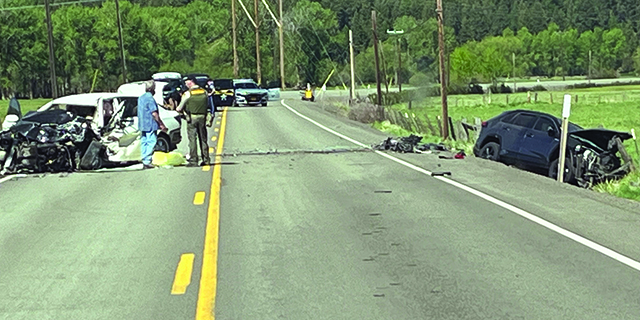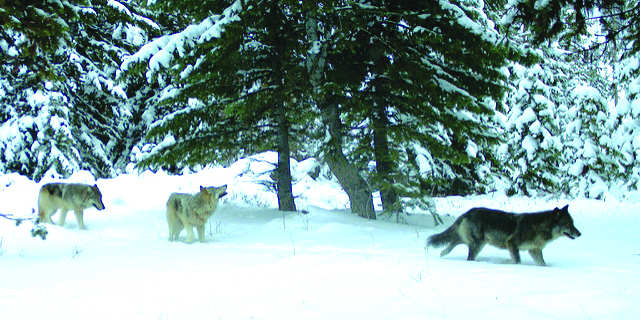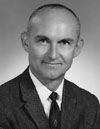Roger Hockett: It’s time to confront our wasteful ways
Published 6:00 am Wednesday, May 10, 2023

- Hockett
My mother on Prairie Creek never wasted anything, except lawnmowers; they ended up in the old bunkhouse when they no longer behaved and there must have been six or seven in there when she stopped mowing the lawn at age 90.
Table scraps went to the hogs; paper and cardboard (what little there was) went to the burn barrel; and there was little metal waste and no plastics at that time. There was no convenience packaging, no throwaway toys or cheap household goods, clothes were worn and then patched and worn some more, and finally became rags for work.
Cars and pickups were driven until they were used up, usually 10-20 years. Machinery was repaired, and repaired, and repaired again. There was little need for a recycling service or a county dump (although there was a boneyard behind our hill for old metal junk). We were not poor; it was just the way most lived in that era of mid-20th century Wallowa County.
Then it all began to change.
It is startling to witness the enormous consumption and waste that typifies humans on Earth in 2023. It is now estimated that humans create more waste than their body weight every week, so much so that the mass of all human-made stuff is now more than the mass of all living things on Earth. The amount of natural resources extracted from the Earth has tripled in the short span of 40 years to 100 billion tons per year and the rate of recycling has declined.
I recently took a trip to the San Diego area (more consumption by me) and once again I was struck by the density of humans and constant presence of consumer consumption. It is even up in the mountains and desert near Warner Springs where I went through Navy survival and POW training in 1969.
Warner Springs was out in the middle of nowhere and now there is a trendy suburban development near the entrance road. As you continue your drive eastward you come down out of the 10,800-foot San Jacinto mountains and look out over the Coachella Valley. You get a grand view of where 370,000 residents live and 3.5 million people visit each year. The average daily water consumption is 188 gallons per day, per person for these residents compared to 66 gallons per person in the rest of California: golf courses and thirsty landscaping everywhere. The scarce water comes from the depleted Colorado River.
Historically the Coachella Valley was a bone-dry, sandy desert with a few hundred Indigenous residents. Now it is too many people consuming too much, and there is no place to escape it. After a few days of this it is exhausting and one seeks a place of quiet respite.
So, how is Wallowa County doing regarding consumption and waste? Consumption and waste are complicated to define in terms of the county. I have read many of the Chieftain articles on the issues regarding the landfill and the recycling center which indicate a very intense interest by county residents to address these problems.
However, overconsumption and waste are everywhere in our American culture. When we visit the county, our first stop is at the Safeway to get our supplies and one can view the exact same single-use plastic convenience packaging that we have in the city and we all know where that will end up. The same is true of the “impulse purchase” trinket products which appeal to tourists. And then there is the construction debris which is filling up the dump; you can’t have a healthy economy without waste.
However, the lifespan of the Ant Flat Landfill is a looming issue as it fills up.
We live in Newcastle, east of Lake Washington, which in the 1890-1920 period had 20,000 coal miners. Under our house are mine shafts that go down 1,000 feet. The house is located next to a 350-acre sanitary landfill operated by King County that was topped off with 1 foot of dirt and closed in 1993.
Then a wealthy ex-Microsoft worker/investor obtained permission to build a prestigious golf course on top of the landfill. To make it work they eliminated a forest border 100 yards deep that absorbed water runoff and sheltered our house. Thereafter during heavy rains, the rust-tinted water travels from the golf course downhill and pours off the rockery and into our French drain. There is an oily film in the water that sits on the golf cart paths.
All that consumption from decades of human activity is still down there in that old landfill under the pretty fairways, waiting to resurface at some future date. That’s something that will have to be considered when the Ant Flat Landfill is closed.
The county’s efforts to recycle are commendable and important, but if you travel the country and see the magnitude of the consumption and waste, you realize that recycling is akin to baling water out of a sinking ocean liner with a bucket.
The only real solution is fewer humans consuming less stuff, and that will be an unbelievably different economic existence. I will be long gone when and if that happens.





